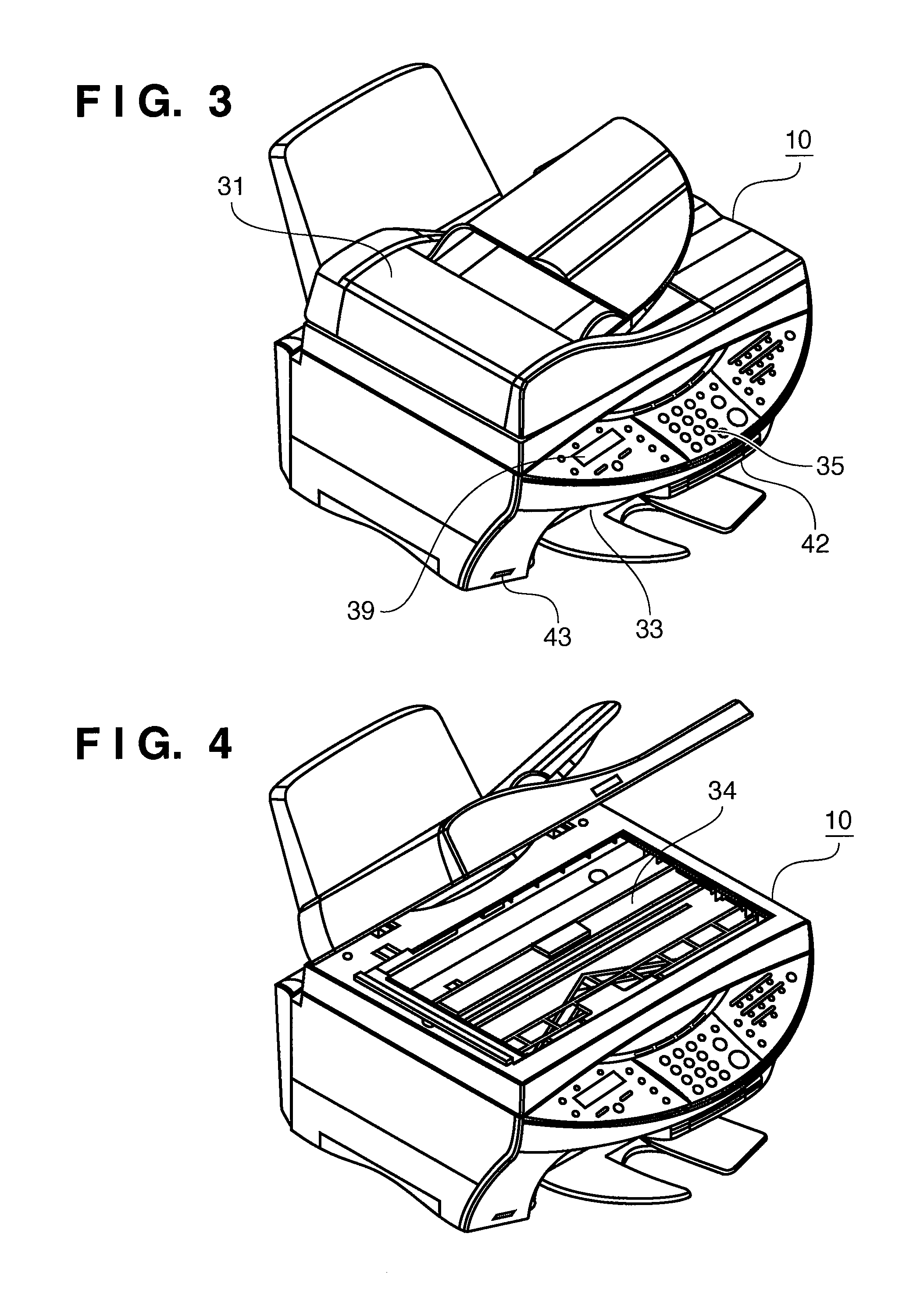Color processing apparatus and method thereof
a color processing apparatus and color processing technology, applied in the field of image processing, can solve the problems of color differences, difficult to generate color modification parameters for all, and difficult to restore the colors of the image of an already faded film, etc., and achieve the effect of reducing the color heterogeneity of the imag
- Summary
- Abstract
- Description
- Claims
- Application Information
AI Technical Summary
Benefits of technology
Problems solved by technology
Method used
Image
Examples
first embodiment
[0073][MFP]
[0074]FIGS. 3 and 4 are views showing an outline of an MFP 10 of the first embodiment.
[0075]The MFP 10 has a function as a printer for printing data received from a host computer (to be referred to as a PC, hereinafter) and a function as a scanner for supplying a scanned image read from an original document to a PC. In addition, as a function of the MFP 10 alone, the MFP 10 includes a copy function of printing a scanned image read from an original document, a function of reading out image data from a storage medium such as a memory card and printing it, and a function of printing image data received from a digital camera.
[0076]The MFP 10 comprises a reading device 34 such as a flatbed scanner, a printing device 33 such as an inkjet or electrophotographic printing device, and an operation panel 35 which includes a display panel 39, various types of key switches, and the like. Also, there is a USB (Universal Serial Bus) port (not shown) for communicating with a PC on the ba...
second embodiment
[0132]The color processing of the second embodiment according to the present invention will now be described. Note that the same components as in the first embodiment are denoted by the same reference numerals in the second embodiment, and a detailed description thereof will not be repeated.
[0133]The second embodiment will exemplify a case in which position-color information is extracted while considering print control information.
[0134]As described above, in case of an inkjet printer, a color or density changes depending on the overlying order of ink colors, the scan direction of a print head, and the like. To solve this problem, a color value is adjusted by using position-color information added to an original print image, that includes not only position information and a color value but also print control information indicating the type of print control to be performed at a corresponding position. With this arrangement, more accurate correction can be performed.
[0135]In step S103...
third embodiment
[0140]The color processing of the third embodiment according to the present invention will now be described. Note that the same components as in the first and second embodiments are denoted by the same reference numerals in the third embodiment, and a detailed description thereof will not be repeated.
[0141]The first and second embodiments have exemplified a case in which a conversion coefficient f is calculated from the color values of a plurality of selection points. The third embodiment will describe a method of correcting an image by using a color value of one selection point. Note that in the third embodiment, an original print image is read, added position-color information (x,y,L,a,b) is acquired, and the color value (L′,a′,b′) of a position (x,y) is acquired from the read image, as in the first embodiment.
[0142]FIGS. 15 and 16 are views for explaining the correction principle of the third embodiment.
[0143]As shown in FIG. 15, assume that an Lab coordinate point indicated by p...
PUM
 Login to View More
Login to View More Abstract
Description
Claims
Application Information
 Login to View More
Login to View More - R&D
- Intellectual Property
- Life Sciences
- Materials
- Tech Scout
- Unparalleled Data Quality
- Higher Quality Content
- 60% Fewer Hallucinations
Browse by: Latest US Patents, China's latest patents, Technical Efficacy Thesaurus, Application Domain, Technology Topic, Popular Technical Reports.
© 2025 PatSnap. All rights reserved.Legal|Privacy policy|Modern Slavery Act Transparency Statement|Sitemap|About US| Contact US: help@patsnap.com



